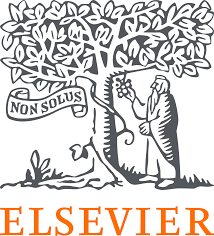Working with Authors for Maximum Accessibility at Elsevier

A dedicated and comprehensive approach to accessible publishing for scientific and technical content requires close interaction with authors. New Inclusive Publishing Partner, Elsevier, shares with us how these interactions shape accessible workflows at this large technical publishing house.
The Challenges of Scale
Every organization has their own set of challenges depending on the nature of their publishing programme. For some, it’s because they publish very complex materials that can be difficult to render accessible, like graphic novels for example. For others, it might be that they are a very small publisher and are finding the people resources needed to implement an accessibility programme challenging. For Elsevier, the main challenge is scale. We publish around 17% of the world’s scientific content, including over 2,000 books and more than 750,000 journal articles per year. It’s therefore important that our approach to author engagement is a systematic one, making sure that every author has a chance to help improve the accessibility of their article, taking into account the varying levels of expertise across authors in this area. In this way, we are able to ensure that we are comprehensive in our provision of content accessibility features within our publishing programme.
Elsevier’s Authors are Subject Matter and Tech Experts
Elsevier publish science, technical, engineering and medical (STEM) content, so their authors are, amongst other things, research scientists, doctors, and engineers. Almost all of them use technology in their working lives in an advanced way every day, and part of what Elsevier offers as an organization is the ability to analyse published content in novel ways with tools like Scopus and SciVal. Recently, Elsevier has launched new AI-driven tools like ScienceDirect AI and Clinical Key AI to help our authors and readers leverage theirs and others’ research even further.
Elseviers’ authors are elite scientists, engineers and healthcare professionals at the apex of their field, and therefore have many demands on their time. An important role, as publisher, is to make sure that any interactions with them are focused as solely as possible on their scientific expertise.
Elsevier Authors and Accessibility
Authors, above all, care about the impact of their research – all authors want to reach the greatest number of people and increase the reputation of their lab and themselves in their field. Accessibility is important to researchers insofar as accessible content reaches more people than inaccessible material. It’s also fair to say that authors are exceptionally busy, time-poor people.
With this in mind, Elsevier’s role is to provide accessibility features content as much as possible. The author’s job is to review the content prior to the paper or chapter’s publication to make sure that it is accurate, complete and relevant.
The goal should be that accessibility checks for authors become a bit like putting together a list of citations – part of the standard process for submitting a chapter or a journal paper which every author expects to do, irrespective of publisher.
Elsevier takes the stance that the more standards, approaches and therefore ultimately experiences for readers can be harmonized, the more accessibility becomes a normal part of the conversation for authors and readers alike.
Including Authors in Accessibility
Elsevier tailors its messaging to authors throughout the workflow to explain how accessibility helps them to achieve their goals in terms of broadening readership and increasing impact. So, for example, it’s important to explain the “what’s in it for me?” question when talking to authors about captions, audio descriptions, and accessibility metadata. This makes it easier for authors to engage with accessibility efforts, changing it from a ‘compliance’ mindset to one about ‘impact’ and ‘adding value to my work’.
By doing this, authors get to experience the positive work that publishers offer on a manuscript, post-submision. They get to understand and support the features that underpin content accessibility, such as alt-text, transcription, metadata, tagged PDFs and EPUBs which make their expert content more discoverable to more people – not only people with disabilities, but also a wider cohort of people who enjoy many of the aforementioned features.
Our thanks to Elevier’s Simon Holt for giving us this insight. We are delighted to welcome them into the Inclusive Publishing Partner program.

